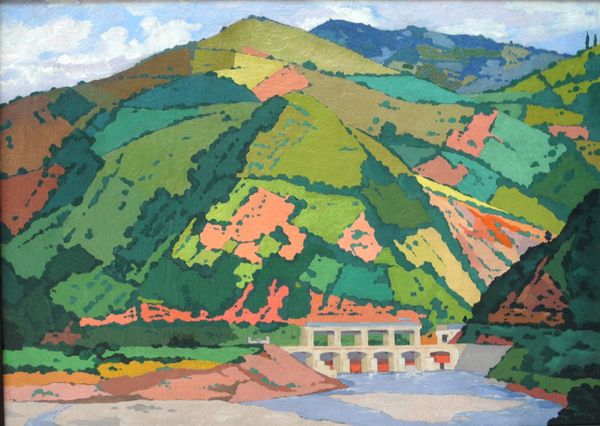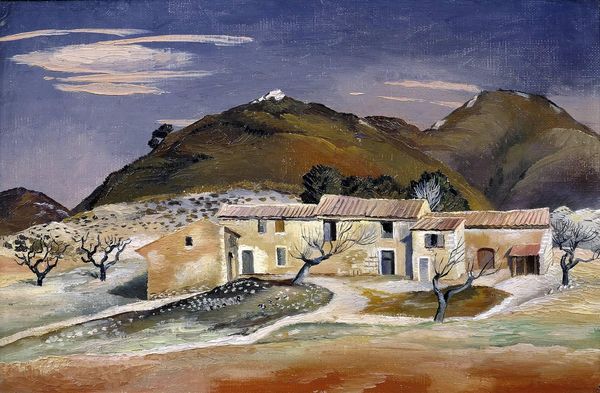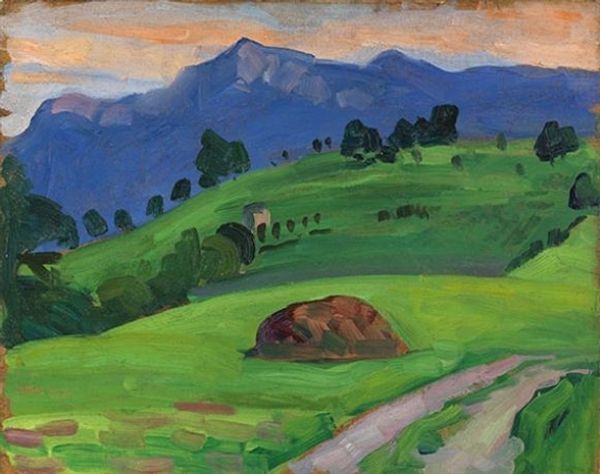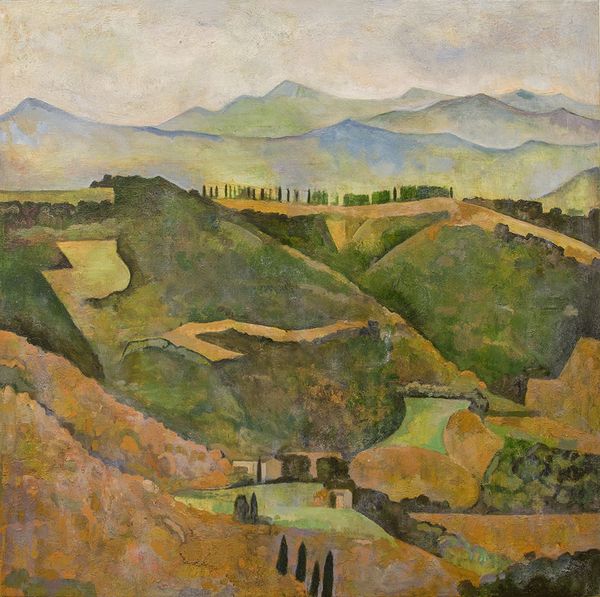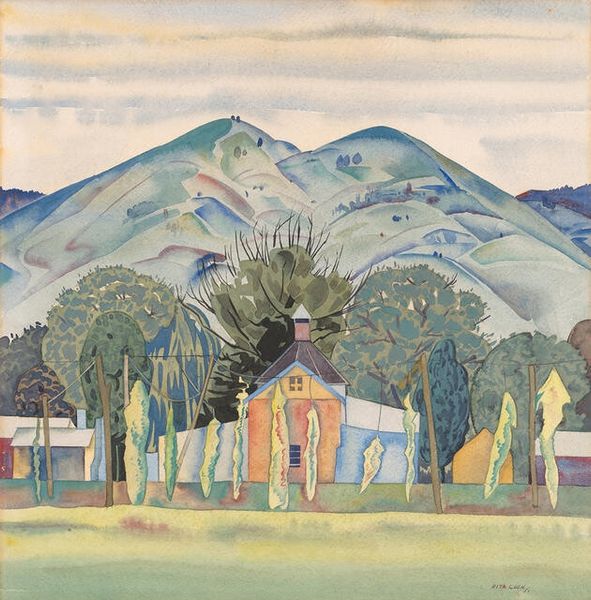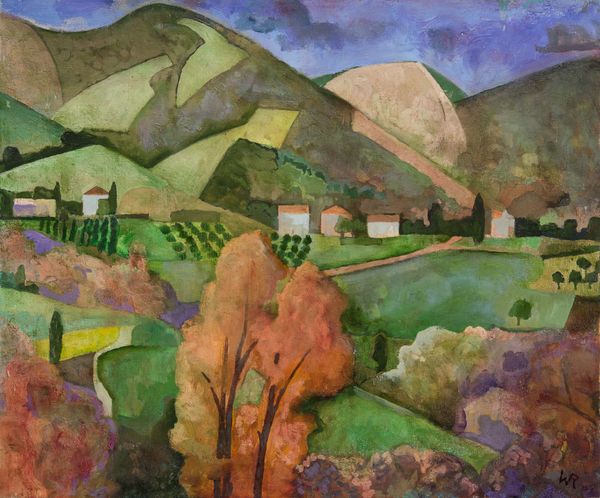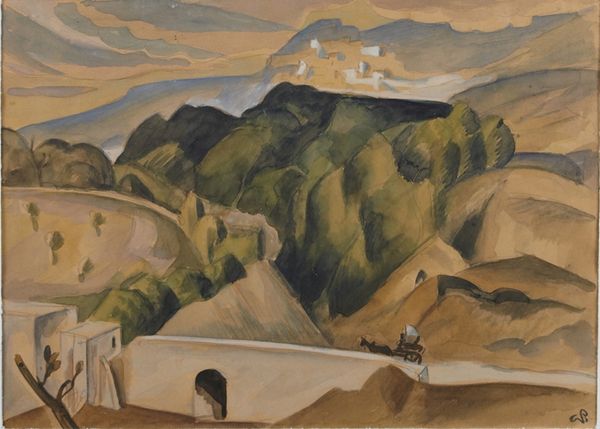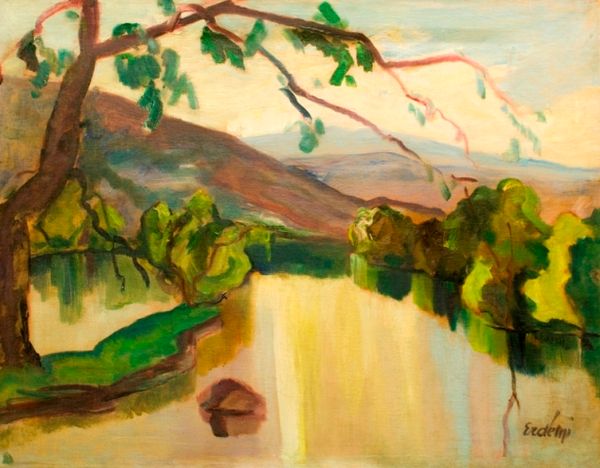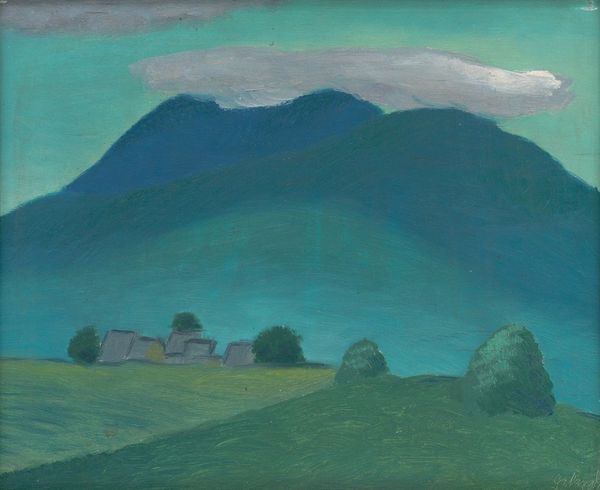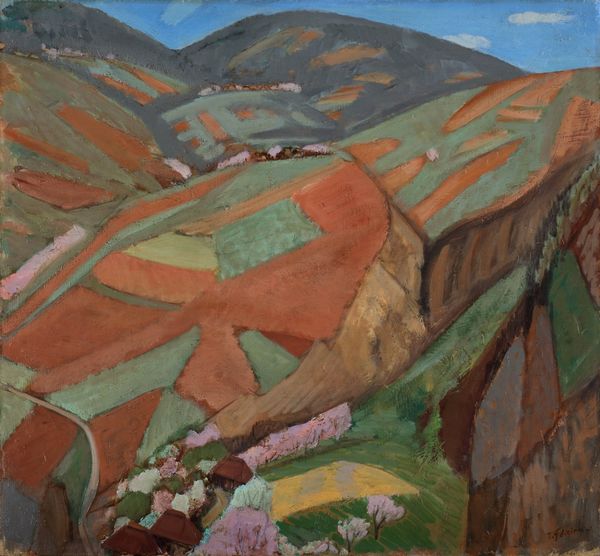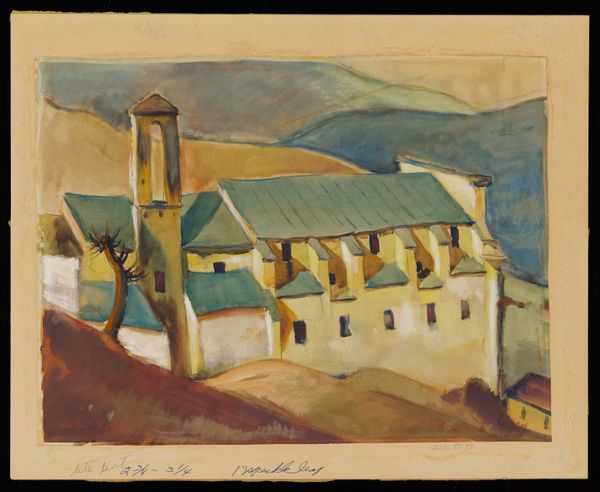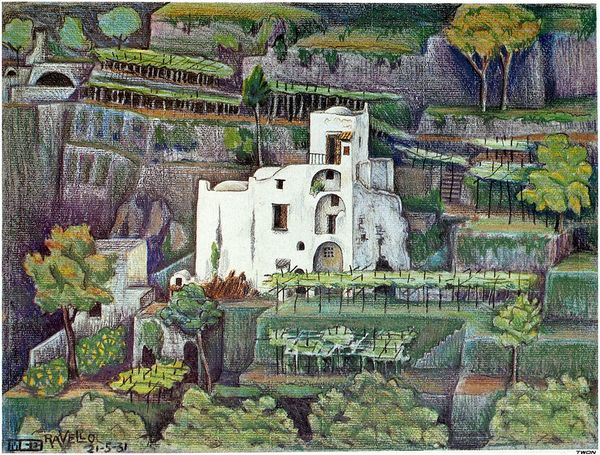
Dimensions: support: 611 x 669 mm frame: 774 x 830 x 58 mm
Copyright: CC-BY-NC-ND 4.0 DEED, Photo: Tate
Editor: This is Dora Carrington's "Farm at Watendlath," held at the Tate. The buildings and landscape feel very solid and present. What do you make of it? Curator: I see a conscious negotiation with traditional landscape painting. Carrington, living in a patriarchal society, uses the domestic space to question the romanticised view of rural life. The almost oppressive green hills box the farm in, hinting at the limitations placed on women. Editor: So, the landscape isn't just a backdrop, but a commentary on societal constraints? Curator: Precisely. The flattened perspective and simplified forms further emphasize this sense of confinement, challenging conventional notions of feminine domesticity and freedom. Editor: I never would have considered it that way. Thanks for pointing that out. Curator: Art can be a powerful means of revealing uncomfortable truths, and that’s something to keep in mind.
Comments
tate 7 months ago
⋮
http://www.tate.org.uk/art/artworks/carrington-farm-at-watendlath-t04945
Join the conversation
Join millions of artists and users on Artera today and experience the ultimate creative platform.
tate 7 months ago
⋮
Carrington was part of a successful generation of graduates from the Slade School of Art in the early 20th century. She was associated with the Bloomsbury Group of writers and artists, who lived, worked and studied together in London. This painting shows farm near Keswick in the Lake District, where the newly-wed Carrington spent a summer holiday with her husband and their friends. Critics have suggested that the landscape was distorted to reflect the curves of the female body. The two small figures gaze towards the landscape, possibly contemplating their own femininity. Gallery label, February 2019
